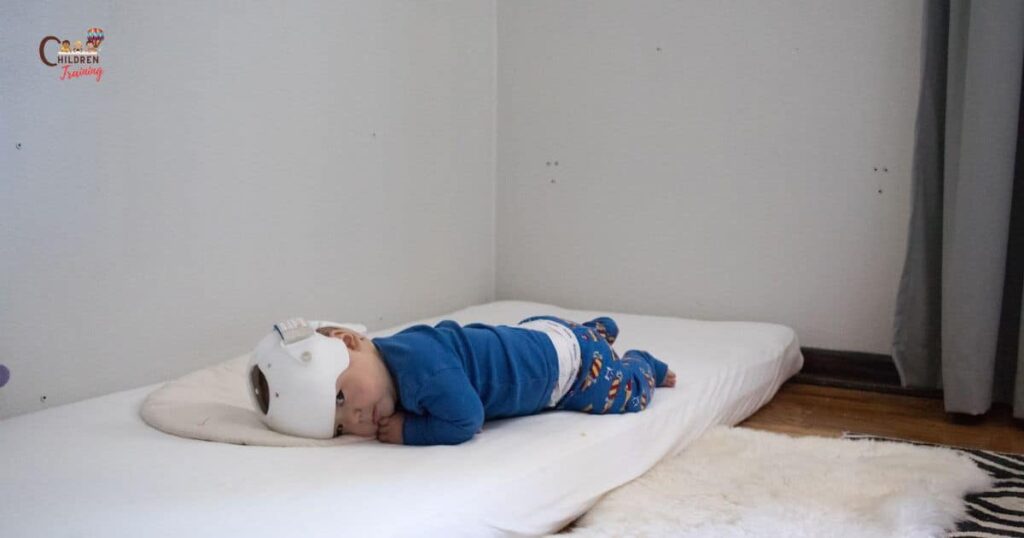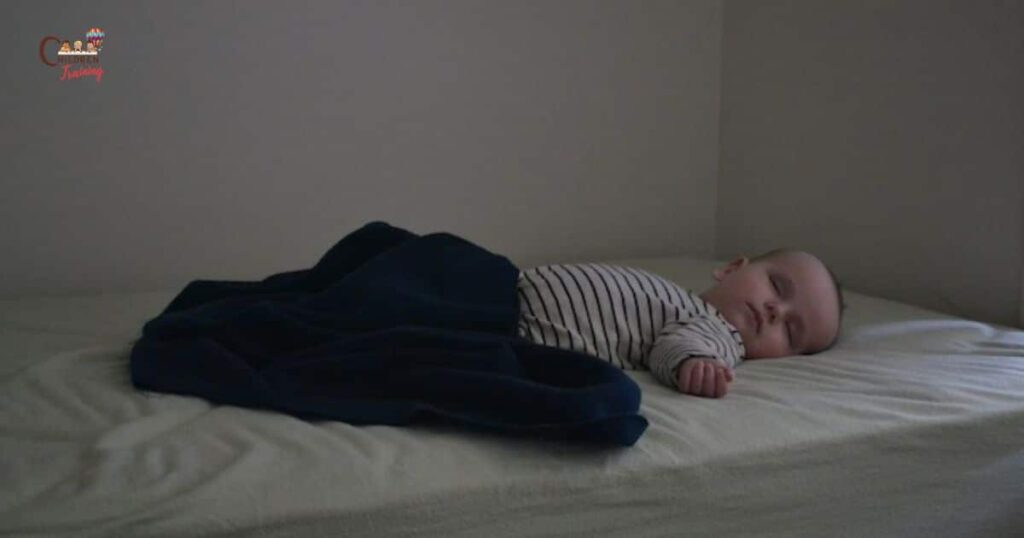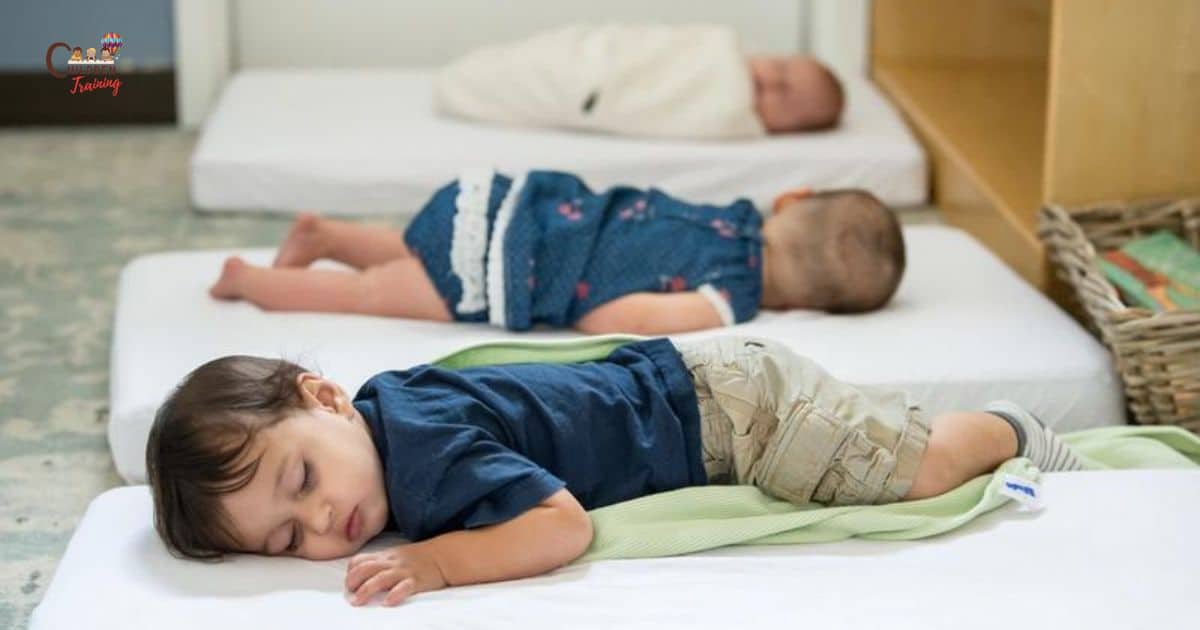Montessori Sleep Training is a gentle approach to help babies and young children develop healthy sleep habits. It focuses on creating a calm and comfortable sleep environment, promoting self-soothing skills and a consistent bedtime routine.
This method values the child’s independence and encourages a positive bedtime experience, aiming to foster better sleep patterns for both the child and the family. Unlock the secret to peaceful nights and well-rested little ones with Montessori Sleep Training useful tips. This innovative approach revolutionizes bedtime by embracing the principles of independence and self-soothing.
Say goodbye to sleep struggles as you embark on a journey that not only promotes healthy sleep habits but also cultivates a nurturing and empowering bedtime routine for your child. Discover the magic of Montessori Sleep Training and transform bedtime into a serene and enjoyable experience for the whole family.
What is Sleep Training?

Sleep training to 5 month old is a way to help babies and young children learn how to sleep better and more independently. It involves creating a consistent bedtime routine and teaching them to fall asleep on their own.
This process can include methods like gradually letting them soothe themselves to sleep, so they become more comfortable sleeping without constant help. Sleep training is not just about getting your child to sleep through the night but also about helping them develop good sleep habits for a lifetime of restful nights.
It’s a gentle and supportive way to guide your child toward healthier sleep patterns.
Different Methods of Sleep Training for infants
Sleep training for infants involves helping them learn how to fall asleep and stay asleep on their own. Here are some simple methods:
Ferber Method
The Ferber Method involves parents checking on their baby at gradually increasing intervals when the baby cries. For instance, they might wait for 3 minutes before going in, then 5 minutes, and so on.
This method aims to teach the baby to self-soothe and fall asleep independently by gradually extending the time between parental check-ins.
Cry-It-Out Method
The Cry-It-Out Method involves letting the baby cry for a set amount of time before parents check on them. Over time, the waiting period is increased.
This method is designed to allow the baby to learn how to fall asleep on their own without immediate soothing from the parents, promoting self-soothing skills.
Chair Method
In the Chair Method, parents initially sit in a chair next to the baby’s crib until the baby falls asleep. As nights progress, parents gradually move the chair farther away, helping the baby get used to falling asleep without constant proximity and dependence on parental presence.
No Tears Method
The No Tears Method, as the name suggests, emphasizes comforting the baby without allowing them to cry alone. Parents respond promptly to the baby’s needs, offering comfort through gentle rocking, patting, or soothing activities. The goal is to create a secure and comforting sleep environment without extended periods of crying.
Bedtime Routine
Establishing a consistent bedtime routine involves creating a series of calming activities before sleep. This routine can include a warm bath, reading a book, or gentle rocking. A predictable routine signals to the baby that it’s time to wind down and prepares them for sleep, promoting a smoother transition to bedtime.
Put Down Method
The Pick Up/Put Down Method involves picking the baby up when they cry, soothing them until they are calm, and then placing them back in the crib. This process is repeated until the baby learns to fall asleep independently.
The method aims to gradually reduce the need for parental intervention as the baby becomes more comfortable with self-soothing.
In Montessori, the floor bed is a must

In Montessori, having a floor bed for babies is really important. Unlike traditional cribs, Montessori floor beds are low to the ground, allowing babies to move around freely. This helps them develop independence and learn to explore their surroundings.
With a floor bed, babies can practice getting in and out of bed on their own, fostering a sense of self-confidence. It also encourages a safe and comfortable environment for them to sleep, play, and discover the world around them without the confines of a crib.
Montessori believes that a floor bed promotes a child’s natural development and encourages their curiosity from an early age.
Sleep Training Align with Montessori Method
The approach to sleep training may not always align perfectly with the Montessori philosophy. Montessori principles emphasize fostering independence, self-regulation, and respect for a child’s natural development.
In traditional sleep training methods, there might be more structured interventions, such as scheduled check-ins or timed intervals, which may not completely align with the Montessori approach.
However, some elements of sleep training can be adapted to align with Montessori principles. For instance:
Independence:
Montessori encourages independence, and this can be incorporated into sleep routines. Setting up a sleep environment that allows a child to explore and eventually settle into sleep independently can be aligned with Montessori values.
Consistency and Routine:
Both sleep training and Montessori emphasize the importance of consistency and routine. Establishing a predictable bedtime routine, even in the context of sleep training, can provide a sense of security and align with Montessori principles.
Respect for the Child’s Pace:
Montessori values respecting a child’s individual pace of development. Similarly, a more gradual and responsive sleep training approach, where parents adapt to the child’s needs and cues, can be in harmony with Montessori principles.
How much sleep does the child require?

The amount of sleep a child needs varies depending on their age. The American Academy of Sleep Medicine provides general guidelines for recommended sleep durations:
Newborns (0-3 months): 14-17 hours per day, including naps.
Infants (4-12 months): 12-16 hours per day, including naps.
Toddlers (1-2 years): 11-14 hours per day, including naps.
Preschoolers (3-5 years): 10-13 hours per day, including naps.
School-age children (6-12 years): 9-12 hours per night.
Teenagers (13-18 years): 8-10 hours per night.
Montessori Approach to Sleep training
In the Montessori approach, sleep is seen as a natural part of a child’s development, and the focus is on creating a sleep environment that promotes independence and self-regulation. Instead of traditional sleep training methods with set schedules, Montessori encourages parents to observe their child’s cues and gradually introduce routines that align with the child’s natural sleep patterns.
Montessori often uses floor beds, allowing children to move freely in and out of bed, promoting a sense of autonomy. The emphasis is on creating a calm and comfortable sleep space, respecting the child’s pace, and fostering a positive attitude towards sleep as a natural and essential part of daily life.
How to make bedtime easy
Making bedtime easy can be simple with a consistent routine and a cozy environment. First, create a calming bedtime routine that signals it’s time to wind down. This could include activities like reading a favorite book, taking a warm bath, or listening to soft music. By doing the same things each night, your child learns that bedtime is approaching. Keep the routine simple and enjoyable, helping your child associate bedtime with positive experiences.
Second, create a comfortable sleep environment. Make sure the room is dark, quiet, and at a comfortable temperature. Use soft blankets and favorite stuffed animals to make the bed inviting. Avoid stimulating activities like screen time close to bedtime, as the blue light from screens can interfere with sleep. Lastly, provide reassurance and comfort.
Be present during the bedtime routine, offer a few minutes of quiet time for talking or cuddling, and let your child know you’ll be nearby. By establishing a routine and a cozy atmosphere, bedtime can become a smoother and more enjoyable experience for both you and your child.
Try Sleep Training your child the Montessori Way

Trying sleep training the Montessori way can be beneficial for your child’s development. In Montessori, we believe in helping children become independent and confident, and this extends to sleep routines too. Using a floor bed, which is low to the ground, allows your child to learn how to get in and out of bed on their own, promoting a sense of self-reliance.
This independence not only builds their confidence but also teaches them to respect their own sleep needs and patterns. Montessori sleep training is about creating a safe and comfortable sleep environment, encouraging your child to explore and settle into sleep on their own terms. It focuses on respecting your child’s natural sleep rhythms while providing a routine that fosters a sense of security.
This approach aligns with the Montessori philosophy of allowing children the freedom to discover and learn at their own pace, promoting a positive and supportive sleep experience for your little one.
FAQ’s
What is Montessori bed technique?
Montessori bed technique involves using a low floor bed to promote independence and self-regulation in a child’s sleep routine
Does Montessori support co sleeping?
Montessori generally encourages independent sleep, but views on co-sleeping vary, and some Montessori families may choose to co-sleep if it aligns with their values.
What age is too late for Montessori?
There’s no strict age limit for Montessori; it can be beneficial at any age, but early exposure maximizes its impact on child development
What is the best age to start Montessori daycare?
The best age to start Montessori daycare is typically around 2 to 3 years old, as children begin to engage more independently in activities.
Conclusion
Montessori Sleep Training is a special way to help kids sleep better. It’s about making a calm and cozy place for them to rest, and it teaches them to fall asleep on their own. Montessori likes to give children independence, so they can learn to do things by themselves. With a floor bed that’s low to the ground, kids can get in and out on their own, making them feel confident. This way, bedtime becomes a happy and peaceful experience for the whole family.
Regular sleep training is about teaching kids to sleep well without always needing help. It involves having a routine, like doing the same calming activities every night, and letting kids soothe themselves to sleep. Montessori sleep training combines independence and a consistent routine, making bedtime a positive time for kids to explore and feel secure. So, if you want bedtime to be easier and enjoyable, trying Montessori Sleep Training might be the magical solution you’re looking for.










